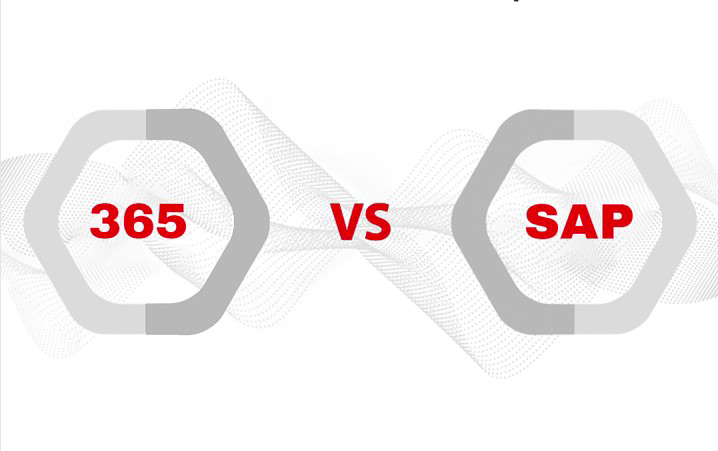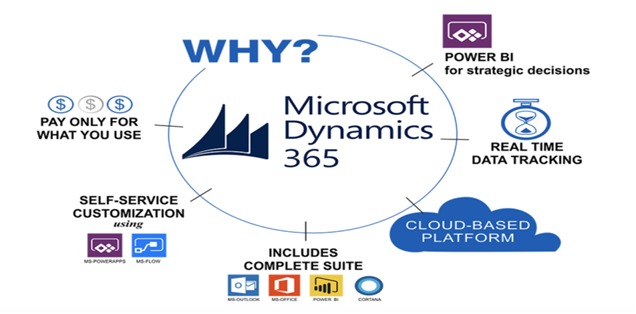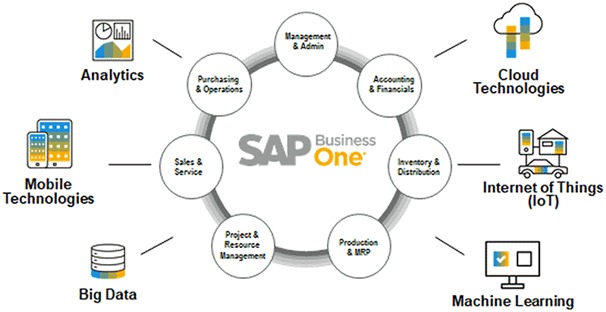Microsoft Dynamics ERP V/S SAP: A Comparison
-
June 11, 2021
- Posted by: Pradeep
- Categories: MICROSOFT DYNAMICS 365, SAP Business One
No Comments

- June 11, 2021
- Posted by: Pradeep
- Categories: MICROSOFT DYNAMICS 365, SAP Business One

The competition in the market is cut-throat and to decide which ERP to choose is a very difficult task. An ERP is a complete software that works on integrating the business functions and automates routine work and helps in decision making. While the options are numerous in the market whether to select an on-premise ERP or cloud ERP and which one to choose. Modern ERP solutions allow their users to access their business information via any digital device improving their productivity both in and out of office.
The two ERP which we are going to discuss today is Microsoft Dynamics and SAP. Proper research and comparison are required before finalising the ERP. In this article, we will discuss the features of both the ERPs and then compare them within each category.
Microsoft Dynamics ERP
The Microsoft Dynamics program started in 2001 with the acquisition of Great Plains Software followed by Solomon software. In 2002 it acquired Danish software company and then it also gained Axapta products. These four products combined made Microsoft’s Business Solution Group, later termed as Microsoft Dynamics. Later the products were renamed as Microsoft Dynamics GP, Microsoft Dynamics SL, Microsoft Dynamics NAV, Microsoft Dynamics AX.

Microsoft Dynamics markets their applications via a channel of reselling partners who provide different services. Dynamics can be used with other Microsoft programmes and services such as Share Point, Yammer, Outlook etc. the industries that the company focuses are retail, services, financial services, manufacturing and public sector. It offers services for small, medium and large enterprises.
Products
Microsoft Dynamics comprises of a group of ERPs that are directed to different market segments for small to large business entities with multiple languages and currency. Microsoft Dynamics consists of mainly two products:
- Microsoft Dynamics 365 for Finance and Operations, Enterprise edition, which was formerly known as Microsoft AX, is a highly scalable and high-performance giving business software for large and global organisations. It is available in different languages and so is fit for multinational companies. It works for sectors such as retail, finance, manufacturing, warehouse, marketing, customer relations. The following are the features of this software:
- Transparency
- High scalability
- Internationality
- Flexibility
- Microsoft Dynamics 365 Business Central, formerly known as (Navision), is an all-round business software cloud-based solution for small and medium-sized business. It provides an end-to-end business scenario for different market segments like finance, operations, sales and customer service. Being a cloud solution, it eliminates the efforts of implementation and cost of upgradation. The following are its main features:
- Easy management of company tasks
- Modern user-friendly interface
- Less expensive
- Seamless integration with Office 365 and Microsoft Dynamics CRM
- Regular automatic upgradation and easily expandable
- Can be accessed from any device
SAP (System Analysis Program) ERP
SAP is an enterprise application software company that offers a wide range of ERP modules for small to medium level enterprises. They offer ERP modules in financial management, customers relations management, human resource management, PLC management and supply chain management.
SAP already has its roots established globally, and now with its new module SAP S/4 HANA, it takes ERP to the next level by using the power of in-memory computing to process vast amounts of data and to support AI.

SAP Modules
- Human Resource Management (SAP HRM), also known as Human Resource (HR)
- Production Planning (SAP PP)
- Material Management (SAP MM)
- Financial Supply Chain Management (SAP FSCM)
- Sales and Distribution (SAP SD)
- Project System (SAP PS)
- Financial Accounting and Controlling (SAP FICO)
- Plant Maintenance (SAP PM)
- Quality Management (SAP QM)
Benefits Of SAP ERP
- Increase in productivity and efficiency
- Cost is effectively used in the price of one ERP
- Customizable solutions
- Data analysis and reporting is made easy
- Maintain the operations inconsistency
Comparison: Microsoft Dynamics ERP V/S SAP
| CAPABILITIES | MICROSOFT DYNAMICS ERP | SAP ERP |
| Ease of use | It has a familiar interface with personalized views and forms and to get that all without extensive coding makes it easy for organizations to implement and adapt it easily | SAP is a built-in niche technology, and so integration requires special integrators depending on the version |
| The total cost of operation | Its varied pricing options and reasonable implementation cost keeps the overall cost to a minimum | The cost of SAP modules is comparably higher as compared to Microsoft dynamics |
| Customization | Customization to suit business needs is very good. Businesses can customize themselves or can higher professionals from outside | To customize to its needs, businesses need to have a sound knowledge of the sap module |
| BI capabilities | Microsoft dynamics have a host of BI tools such as Cortana Intelligence, Azure, etc to enable deep insights into business | SAP is required to have its own server, database and security structure in order to deploy BI. |
Common challenges with SAP
- Offers limited configuration options
- The cost associated is on a higher side, making it difficult for startups or SMEs to adopt
- The user interface is rather difficult to handle
Common challenges with Microsoft Dynamics
- Integration with other platforms apart from that of Microsoft’s is limited and difficult
- In spite of the low overall cost, it is popular among small and medium level enterprises.
Conclusion
The fight among ERP will never be over. But choosing the right ERP for your business is an important task. Without a good ERP that is implemented at low cost, provides hassle-free workflow and has powerful BI capabilities, it will not be possible for business organizations to face the cut-throat competition.
Although Microsoft Dynamics comes forward with its low- cost implementation, SAP still is more popular in the market. One reason can be that it integrates easily with other platforms as well and it is easy to understand as well. But choosing an ERP is solely up to you and depends upon the budget constraints and the size of the business. Do not be in a hurry while deciding on the ERP and do your own research first and then make a decision what is best for you.


